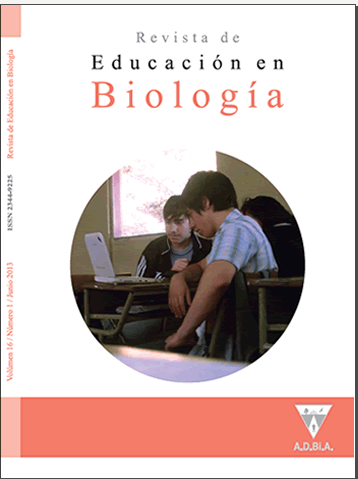Narrative Format in the Teaching of a Complex Model Health and Disease
Main Article Content
Abstract
Throughout history, stories have been the chosen way to share information,
therefore it can be stated that human beings’ ability to tell stories is their distinctive feature. Narrative peculiarities make it a powerful tool for science teaching and learning. Transformation of contents into stories creates motivation and exposes more humanized and complex aspects of scientific enterprises. We hereby describe the particularities of the narrative format, identify the contributions to science learning, and describe the role
assigned to three narratives embedded in a teaching unit intended to teach argument and a health - disease complex model to 17 -18 year old students.
therefore it can be stated that human beings’ ability to tell stories is their distinctive feature. Narrative peculiarities make it a powerful tool for science teaching and learning. Transformation of contents into stories creates motivation and exposes more humanized and complex aspects of scientific enterprises. We hereby describe the particularities of the narrative format, identify the contributions to science learning, and describe the role
assigned to three narratives embedded in a teaching unit intended to teach argument and a health - disease complex model to 17 -18 year old students.
Article Details
How to Cite
Narrative Format in the Teaching of a Complex Model Health and Disease. (2013). Journal of Biology Education, 16(1), (pp. 28- 36 ). https://doi.org/10.59524/2344-9225.v16.n1.22383
Section
Investigaciones y desarrollos

This work is licensed under a Creative Commons Attribution-NonCommercial-ShareAlike 4.0 International License.
Aquellos autores/as que tengan publicaciones con esta revista, aceptan los términos siguientes:- Los autores/as conservarán sus derechos de autor y garantizarán a la revista el derecho de primera publicación de su obra, el cuál estará simultáneamente sujeto a la Licencia de reconocimiento de Creative Commons que no se permite un uso comercial de la obra original ni de las posibles obras derivadas, la distribución de las cuales se debe hacer con una licencia igual a la que regula la obra original.
- Los autores/as podrán adoptar otros acuerdos de licencia no exclusiva de distribución de la versión de la obra publicada (p. ej.: depositarla en un archivo telemático institucional o publicarla en un volumen monográfico) siempre que se indique la publicación inicial en esta revista.
- Se recomienda a los autores/as difundir su obra a través de Internet (p. ej.: en archivos telemáticos institucionales o en su página web) después del proceso de publicación, lo cual puede producir intercambios interesantes y aumentar las citas de la obra publicada. (Véase El efecto del acceso abierto).
How to Cite
Narrative Format in the Teaching of a Complex Model Health and Disease. (2013). Journal of Biology Education, 16(1), (pp. 28- 36 ). https://doi.org/10.59524/2344-9225.v16.n1.22383

